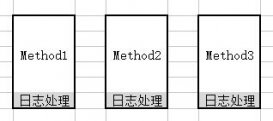mybatis返回单一对象或对象列表
一、说明
- 返回数据类型由dao中的接口和map.xml文件共同决定。另外,不论是返回单一对象还是对象列表,***map.xml中的配置都是一样的,都是resultMap=”***Map”或resultType=“* .* .*”类型.
- 每一次mybatis从数据库中select数据之后,都会检查数据条数和dao中定义的返回值是否匹配。
- 若返回一条数据,dao中定义的返回值是一个对象或对象的List列表,则可以正常匹配,将查询的数据按照dao中定义的返回值存放。
- 若返回多条数据,dao中定义的返回值是一个对象,则无法将多条数据映射为一个对象,此时mybatis报错。
二、代码测试
UserMap.xml映射文件
|
1
2
3
4
5
6
7
8
9
10
11
12
13
14
15
16
17
18
19
20
21
22
23
24
25
26
27
28
29
30
31
32
33
34
35
36
37
38
39
40
41
42
43
44
45
46
47
|
<resultMap id="BaseResultMap" type="com.ks.ssm.domain.User" > <id column="id" property="id" jdbcType="BIGINT" /> <result column="username" property="username" jdbcType="VARCHAR" /> <result column="password" property="password" jdbcType="VARCHAR" /> <result column="email" property="email" jdbcType="VARCHAR" /> <result column="qq" property="qq" jdbcType="VARCHAR" /> <result column="phone" property="phone" jdbcType="VARCHAR" /> <result column="gender" property="gender" jdbcType="BIT" /> <result column="birthday" property="birthday" jdbcType="DATE" /> <result column="city" property="city" jdbcType="VARCHAR" /> <result column="mood" property="mood" jdbcType="VARCHAR" /> <result column="single" property="single" jdbcType="BIT" /> <result column="enrolltime" property="enrolltime" jdbcType="TIMESTAMP" /> <result column="level" property="level" jdbcType="TINYINT" /> <result column="status" property="status" jdbcType="BIT" /> <result column="titlepic" property="titlepic" jdbcType="VARCHAR" /> <result column="job" property="job" jdbcType="VARCHAR" /> <result column="logintime" property="logintime" jdbcType="TIMESTAMP" /> <result column="loginip" property="loginip" jdbcType="VARCHAR" /> <result column="token" property="token" jdbcType="VARCHAR" /> <result column="modifytime" property="modifytime" jdbcType="TIMESTAMP" /> </resultMap> <sql id="Base_Column_List" > id, username, password, email, qq, phone, gender, birthday, city, mood, single, enrolltime, level, status, titlepic, job, logintime, loginip, token, modifytime </sql> <select id="selectByPrimaryKey" resultMap="BaseResultMap" parameterType="java.lang.Long" > select <include refid="Base_Column_List" /> from user_info where id = #{id,jdbcType=BIGINT} </select> <!-- add by ks --> <select id="selectByUserName" resultMap="BaseResultMap" parameterType="java.lang.String" > select <include refid="Base_Column_List" /> from user_info where username = #{username,jdbcType=VARCHAR} </select> <!-- mybatis 非常的智能,返回值统一使用 resultMap="BaseResultMap",mybatis会根据查询到的条目数量自动进行判断,如果是一条就返回对象,如果是多条就返回List对象列表--> <select id="selectByEmail" resultMap="BaseResultMap" parameterType="java.lang.String" > select <include refid="Base_Column_List" /> from user_info where email = #{email,jdbcType=VARCHAR} </select> <!-- end by ks --> |
dao文件UserMap.java
|
1
2
3
4
5
6
7
8
9
10
11
|
public interface UserMapper { User selectByPrimaryKey(Long id); User selectByUserName(String username ); /**关于mybatis返回单一对象或对象列表的问题: * 1.返回数据类型由dao中的接口和*map.xml文件共同决定。另外,不论是返回单一对象还是对象列表,*map.xml中的配置都是一样的,都是resultMap="*Map"*或resultType=“* .* .*”类型. * 2.每一次mybatis从数据库中select数据之后,都会检查数据条数和dao中定义的返回值是否匹配。 * 3.若返回一条数据,dao中定义的返回值是一个对象或对象的List列表,则可以正常匹配,将查询的数据按照dao中定义的返回值存放。 * 4.若返回多条数据,dao中定义的返回值是一个对象,则无法将多条数据映射为一个对象,此时mybatis报错。 * */ List<User> selectByEmail(String email );} |
测试代码和结果文件
|
1
2
3
4
5
6
7
8
9
10
11
12
13
14
15
16
17
18
19
|
@RunWith(SpringJUnit4ClassRunner.class) //表示继承了SpringJUnit4ClassRunner类@ContextConfiguration(locations = {"classpath:spring-mybatis.xml"})public class TestMyBatis { private static Logger logger = Logger.getLogger(TestMyBatis.class); @Resource private UserMapper userDao; @Test public void testMybatis() { User user = userDao.selectByUserName("ks"); logger.info("user........................."); logger.info(JSON.toJSONString(user)); List<User> users=userDao.selectByEmail("ks"); logger.info("list........................."); for(User userTemp : users) { logger.info(JSON.toJSONString(userTemp)); } }} |

mybatis 返回的对象包含集合
DeviceQuestionInstruction.java
|
1
2
3
4
5
6
7
8
9
|
import com.hikari.cloud.data.entity.TbInstruction;import lombok.Data;import java.util.Date;import java.util.List;@Datapublic class DeviceQuestionInstruction {//tb_instruction 使用说明表 private String dvqsTitle; private List<TbInstruction> instructionList;} |
TbInstruction.java
|
1
2
3
4
5
6
7
8
9
10
11
12
13
14
15
16
17
18
19
|
import lombok.Data;import java.util.Date;@Datapublic class TbInstruction {//tb_instruction 使用说明表 private Long id; private Long userId; private String title; private String detail; private String url; private Integer type; private Integer suffix; private String deviceCategory; private String deviceTypeName; private String deviceTypeNum; private Integer views; private Long dvqsId; private Integer dvqsLevel; private Date gmtCreate;} |
TbDeviceQuestionMapper.java
|
1
2
3
4
5
6
|
import com.hikari.cloud.data.bean.DeviceQuestionInstruction;import org.apache.ibatis.annotations.Param;import java.util.List;public interface TbDeviceQuestionMapper { List<DeviceQuestionInstruction> findByNo(@Param("deviceTypeNo") String deviceTypeNo);} |
TbDeviceQuestionMapper.xml
|
1
2
3
4
5
6
7
8
9
10
11
12
13
14
15
16
17
18
19
20
21
22
23
24
25
26
27
28
29
30
31
32
33
|
<?xml version="1.0" encoding="UTF-8" ?><!DOCTYPE mapper PUBLIC "-//mybatis.org//DTD Mapper 3.0//EN" "http://mybatis.org/dtd/mybatis-3-mapper.dtd"><mapper namespace="com.hikari.cloud.data.mapper.TbDeviceQuestionMapper"> <resultMap id="dataMap" type="com.hikari.cloud.data.bean.DeviceQuestionInstruction"> <result column="dvqs_title" property="dvqsTitle"/> <collection property="instructionList" resultMap="insResultMap"/> </resultMap> <resultMap id="insResultMap" type="com.hikari.cloud.data.entity.TbInstruction"> <result column="id" property="id"/> <result column="user_id" property="userId"/> <result column="title" property="title"/> <result column="detail" property="detail"/> <result column="url" property="url"/> <result column="type" property="type"/> <result column="suffix" property="suffix"/> <result column="device_category" property="deviceCategory"/> <result column="device_type_name" property="deviceTypeName"/> <result column="device_type_num" property="deviceTypeNum"/> <result column="views" property="views"/> <result column="dvqs_id" property="dvqsId"/> <result column="dvqs_level" property="dvqsLevel"/> <result column="gmt_create" property="gmtCreate"/> </resultMap> <select id="findByNo" resultType="com.hikari.cloud.data.bean.DeviceQuestionInstruction" resultMap="dataMap"> SELECT tb_device_question.title AS dvqs_title,tb_instruction.* FROM tb_device_question LEFT JOIN tb_instruction ON tb_device_question.id=tb_instruction.dvqs_id WHERE tb_device_question.device_type_no='HSAT-K5' ORDER BY tb_instruction.dvqs_level ASC </select></mapper> |
以上为个人经验,希望能给大家一个参考,也希望大家多多支持服务器之家。
原文链接:https://blog.csdn.net/kangsenkangsen/article/details/51236279
















